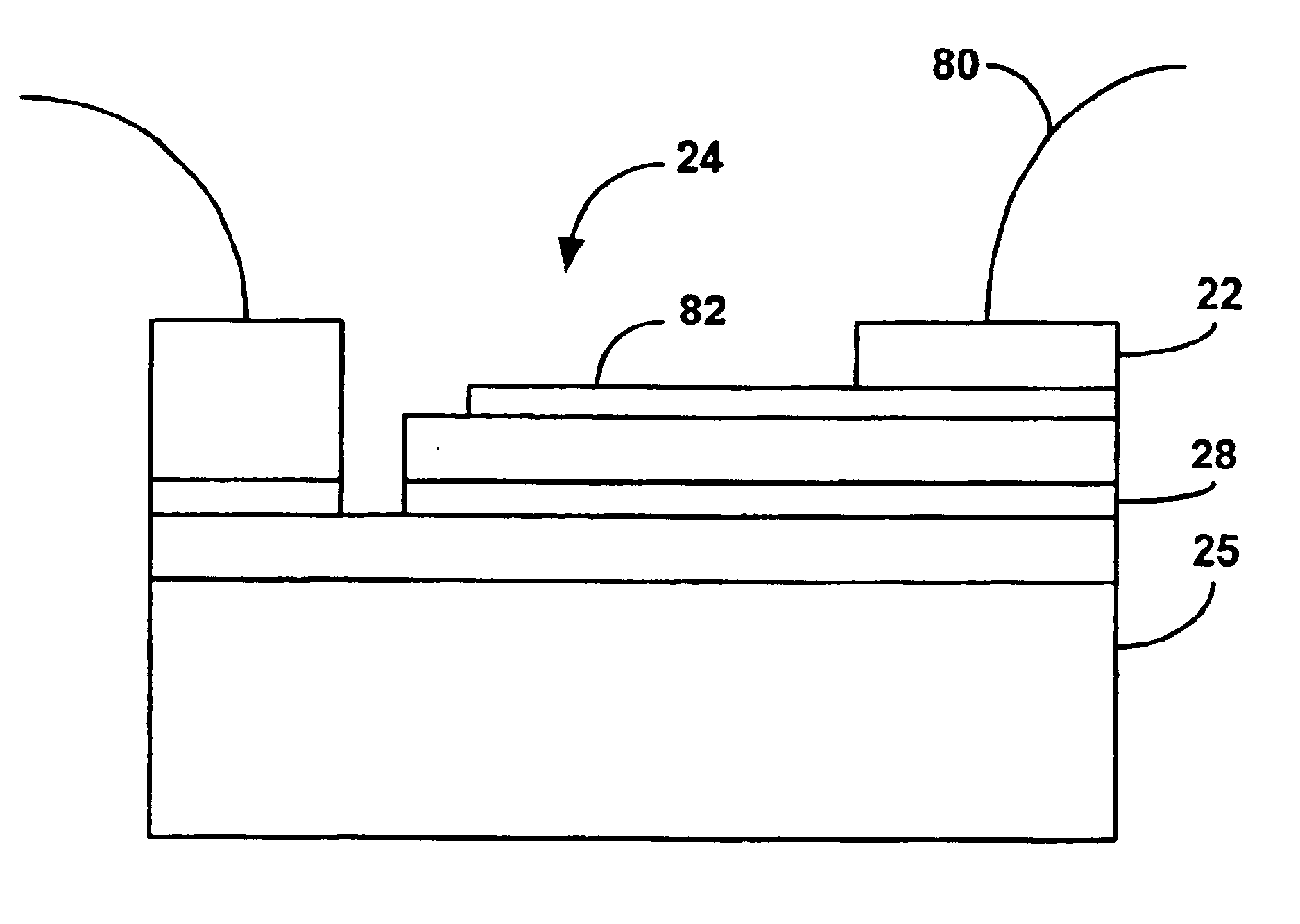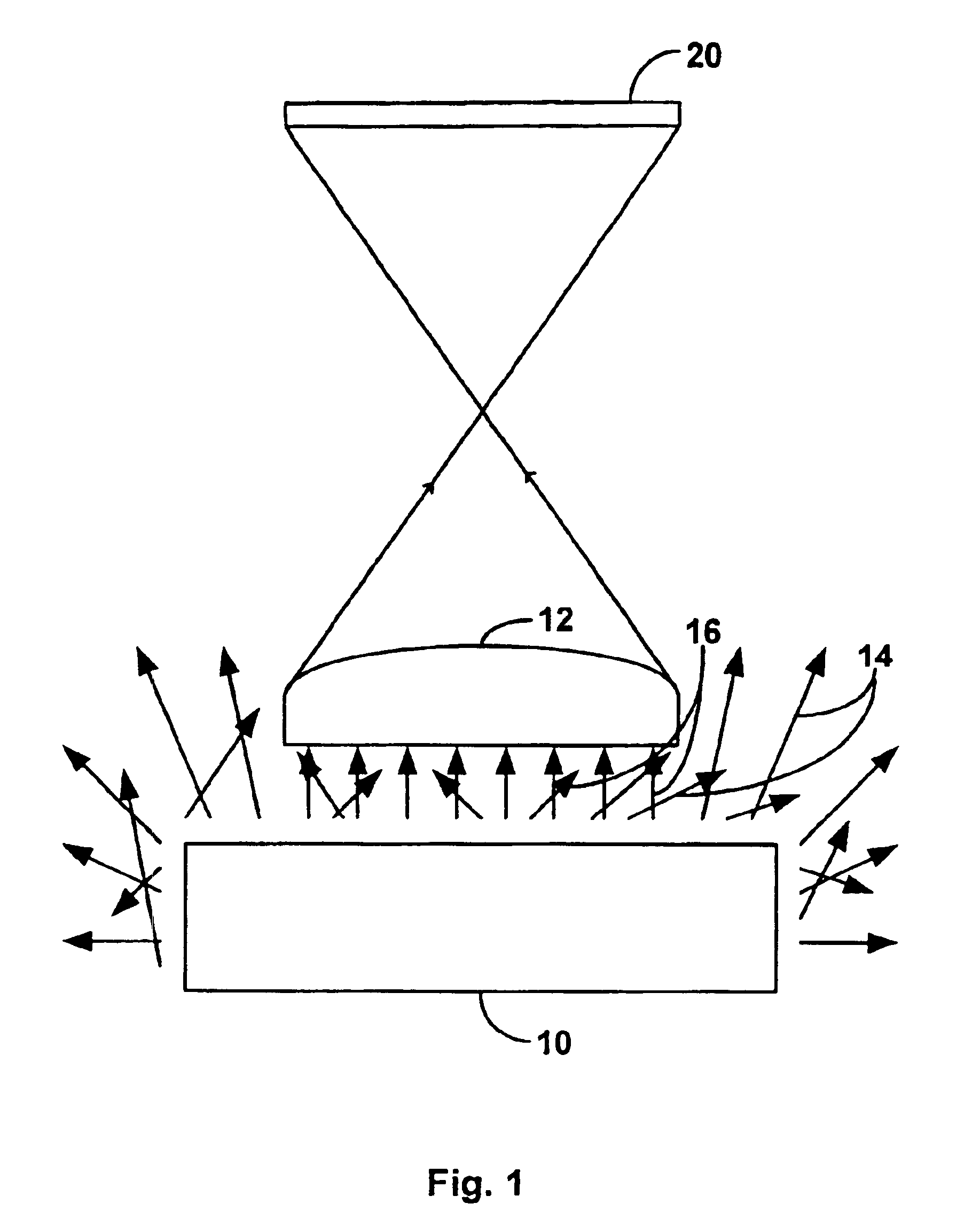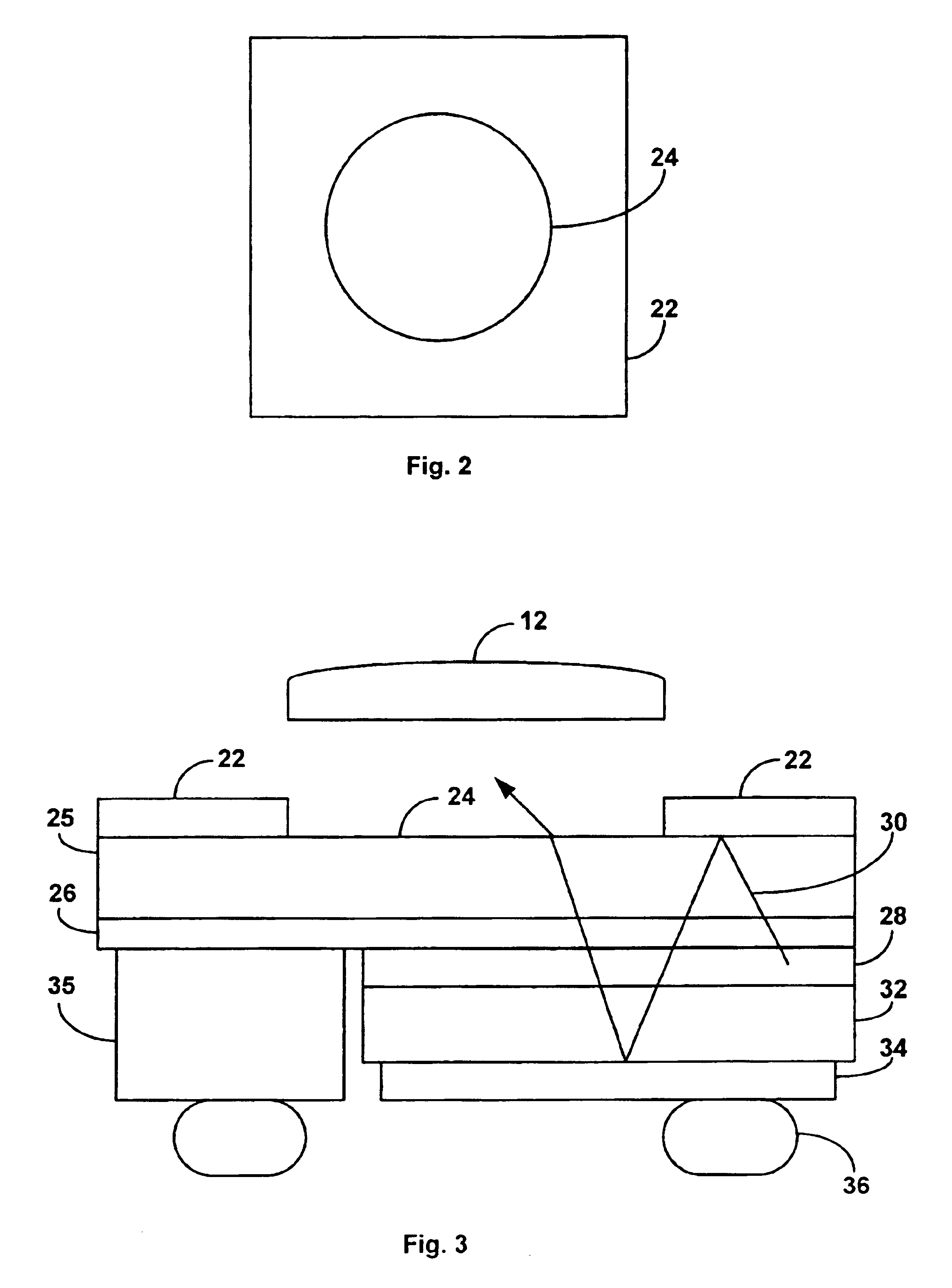Enhanced brightness light emitting device spot emitter
a light emitting device and spot emitter technology, applied in the direction of discharge tube/lamp details, discharge tube luminescnet screens, lighting and heating apparatus, etc., can solve the problems of low light generating efficiency, high current density, and increased lens cost, so as to increase the amount of usefully captured light in the optical system
- Summary
- Abstract
- Description
- Claims
- Application Information
AI Technical Summary
Benefits of technology
Problems solved by technology
Method used
Image
Examples
Embodiment Construction
[0024]In accordance with embodiments of the invention, the amount of light captured in an optical system may be increased by directing light from the source into the etendue-limit of the optical system so that it can be captured by the optical system. The light source may be a semiconductor light emitting device such as a light emitting diode. Embodiments of the invention are applicable to semiconductor light emitting devices of various materials systems, including, for example, III-V systems such as III-nitride, III-phosphide, and III-arsenide, and II-VI systems. Further, embodiments of the invention are applicable to any semiconductor light emitting devices where the device layers and substrate are reasonably transparent to light, including devices having both contacts formed on the same side of the device, such as flip-chip and epitaxy-up devices, as well as devices having contacts formed on opposite sides of the device.
[0025]FIG. 2 illustrates a top view of a light emitting devi...
PUM
 Login to View More
Login to View More Abstract
Description
Claims
Application Information
 Login to View More
Login to View More - R&D
- Intellectual Property
- Life Sciences
- Materials
- Tech Scout
- Unparalleled Data Quality
- Higher Quality Content
- 60% Fewer Hallucinations
Browse by: Latest US Patents, China's latest patents, Technical Efficacy Thesaurus, Application Domain, Technology Topic, Popular Technical Reports.
© 2025 PatSnap. All rights reserved.Legal|Privacy policy|Modern Slavery Act Transparency Statement|Sitemap|About US| Contact US: help@patsnap.com



